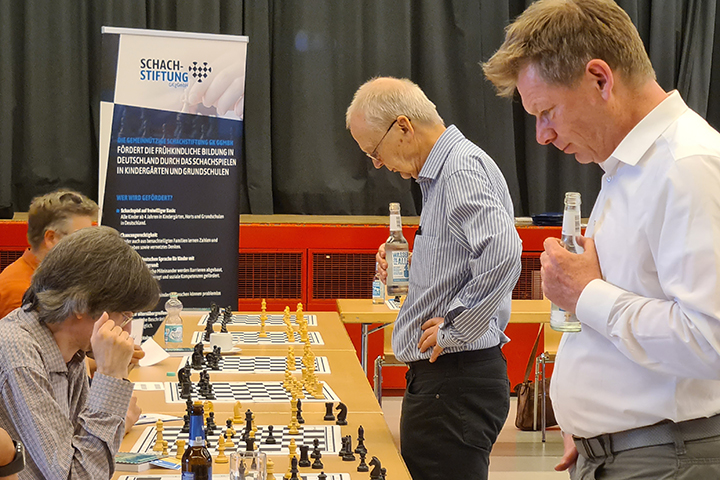Chess4Refugees
Press release by the Emanuel Lasker Society
The entire world is experiencing a refugee crisis of unimagined proportions. This crisis has many causes that can only be solved with the means of international politics. Europe in particular will have to adjust to taking in and integrating more and more refugees.
The challenges involved are certainly manifold and exhausting. However, behind every refugee lies the fate of a human being, one that should not be overlooked. Finding appropriate solutions requires courage and confidence, which needs a consolidated and committed civil society as its foundation.
 The name Emanuel Lasker will always be linked with his incredible 27 years reign on the throne of world chess. In 1894, at the age of 25, he had already won the world title from Wilhelm Steinitz and his record number of years on the throne did not end till 1921 when Lasker had to accept the superiority of Jose Raul Capablanca. But not only had the only German world champion so far seen off all challengers for many years, he had also won the greatest tournaments of his age, sometimes with an enormous lead. The fascinating question is, how did he manage that?
The name Emanuel Lasker will always be linked with his incredible 27 years reign on the throne of world chess. In 1894, at the age of 25, he had already won the world title from Wilhelm Steinitz and his record number of years on the throne did not end till 1921 when Lasker had to accept the superiority of Jose Raul Capablanca. But not only had the only German world champion so far seen off all challengers for many years, he had also won the greatest tournaments of his age, sometimes with an enormous lead. The fascinating question is, how did he manage that?Chess can do little to exert influence internationally. Nationally, however, chess offers a good opportunity to make a significant contribution to the integration of refugees. Since there are no barriers and exclusions in chess, people of all nationalities can come into contact through the royal game regardless of language barriers, age limits, genders or religious beliefs — i.e. the first step towards a prosperous social coexistence.
Perhaps the most important contribution to integration is made by schools, which do indispensable groundwork every day with their numerous welcome classes. Many schools already use the integration effect of chess. In particular, the Lasker Society welcomes and supports players of all levels, with the help of the Garry Kasparov Chess Foundation.
Since Dr. Emanuel Lasker himself became a refugee in his later years, it is a matter of course for the ELS to get involved. As part of our chess culture, we not only demand support from the state, but attempt to make an active contribution ourselves. The ELS has therefore decided to create a platform of solidarity and support under the label ‘chess4refugees’, with an annual charity simultaneous exhibition at a successful integration school. In this respect, donations of at least €5,000.00 are to be raised for each simultaneous exhibition, half of which is to be donated to the German UN Refugee Aid and half to a partner school, which changes every year.
Although this amount would only be a ‘drop in the ocean’, it would be a start. Thus, the actual goal of this campaign should be to consciously invite other players from the chess community, both nationally and internationally, to imitate and participate, in addition to the recognition and financial support for the annually selected partner school and the UN refugee aid.
Photos from the simultaneous exhibition

Hamburg Elite School of Sports | Photo: Nadja Wittmann

Panoramic view of Hamburg from the staircase of the Schumacher school building on Alter Teichweg in Dulsberg (Hamburg) | Photo: Nadja Wittmann
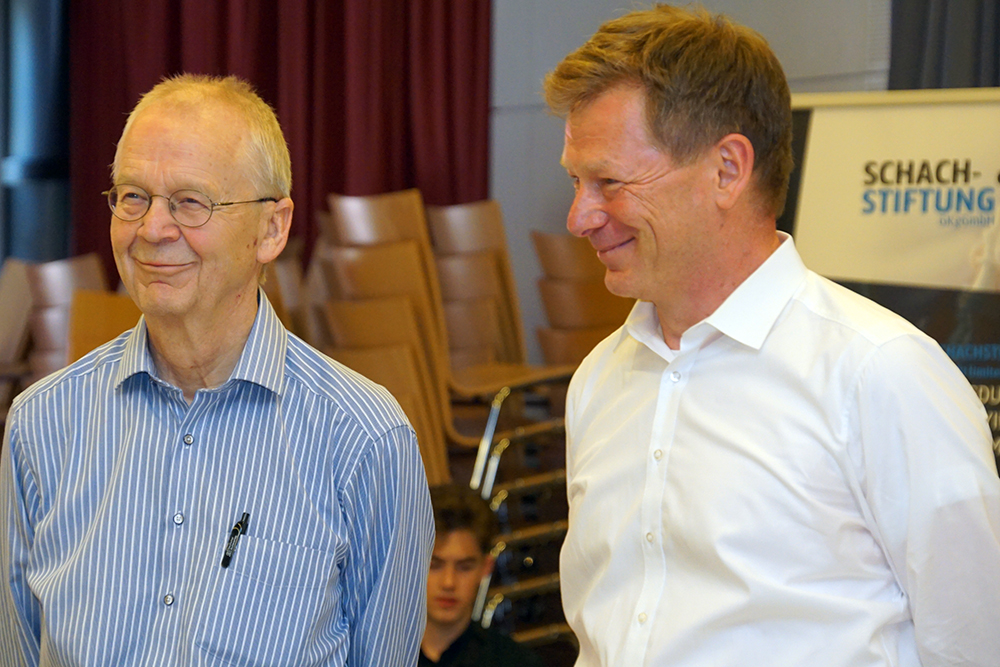
The two simultaneous gladiators: Grandmaster Dr Helmut Pfleger and Dr Richard Lutz (Chairman of the Board of the Deutsche Bahn) | Photo: Nadja Wittmann
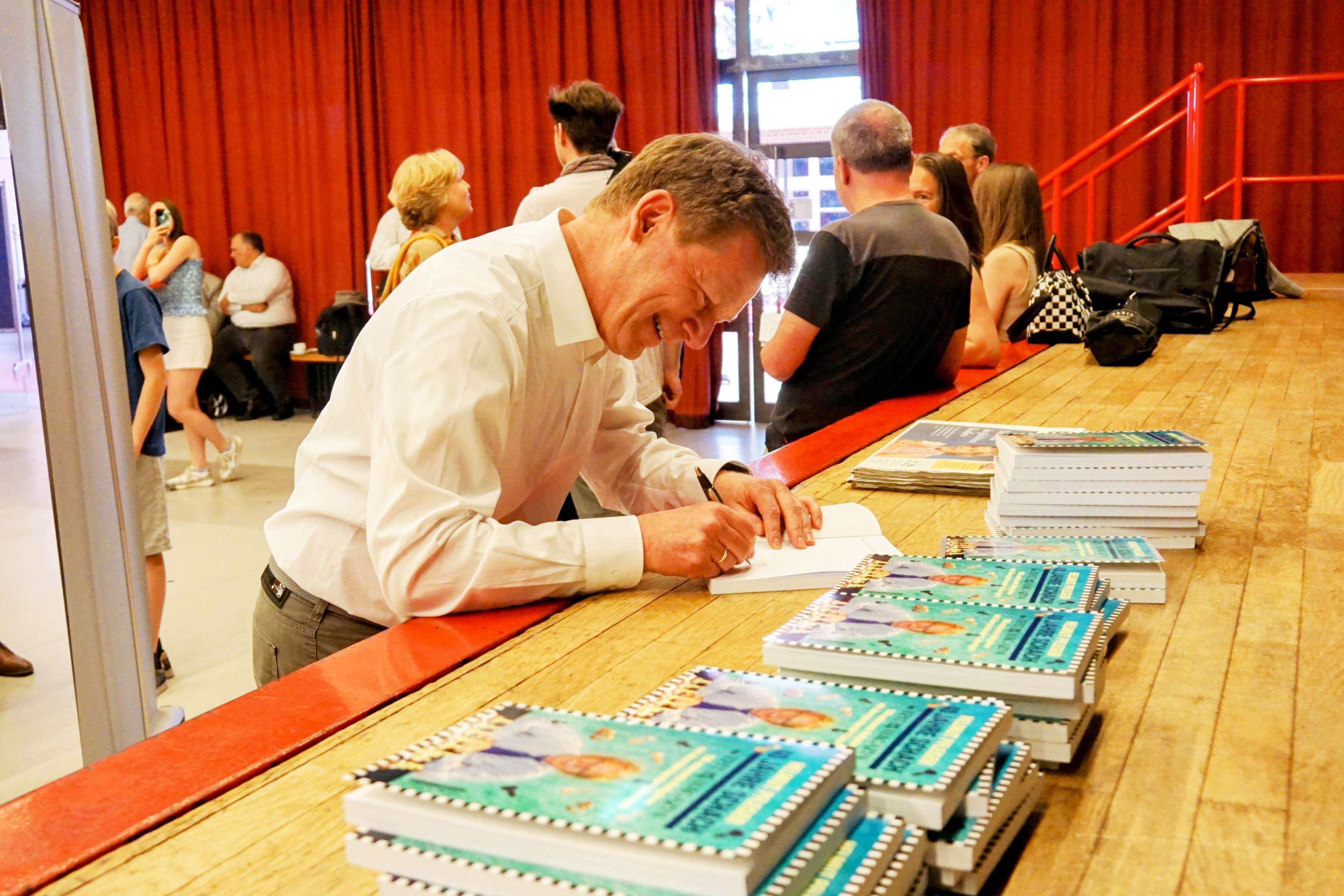
Before the simul: Dr. Richard Lutz signs books by Helmut Pfleger (40 Jahre Schach im ZEIT Magazin), which all the simul participants received as a gift at the end | Photo: Nadja Wittmann
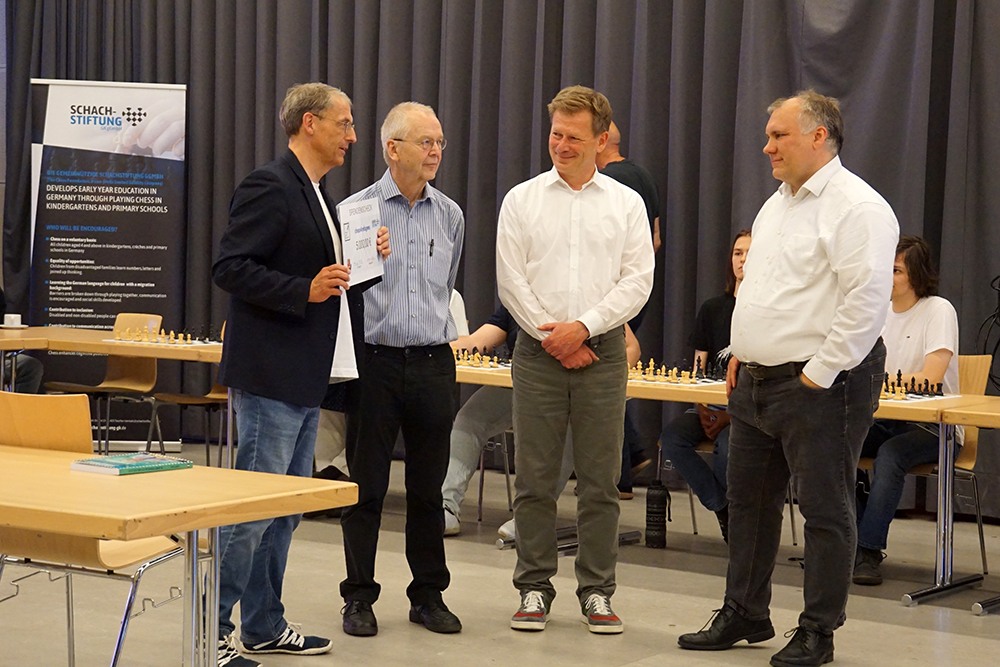
Thomas Weischede (Emanuel Lasker Society), Dr Helmut Pfleger, Dr Richard Lutz and Björn Lengwenus (Headmaster of the Elite School of Sport in Hamburg) | Photo: Nadja Wittmann
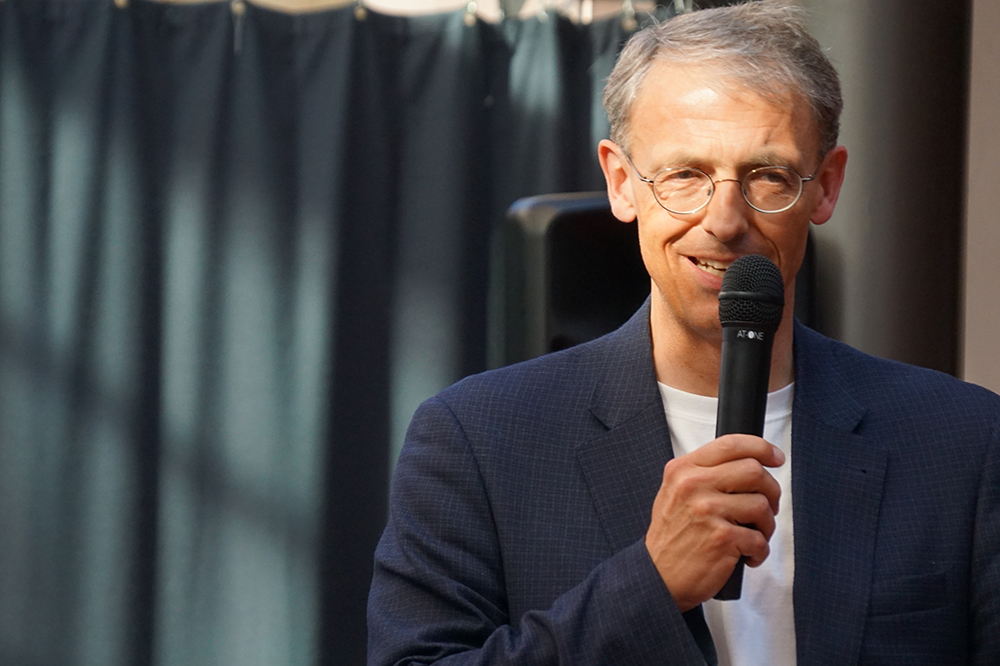
Thomas Weischede welcomes everyone present | Photo: Nadja Wittmann
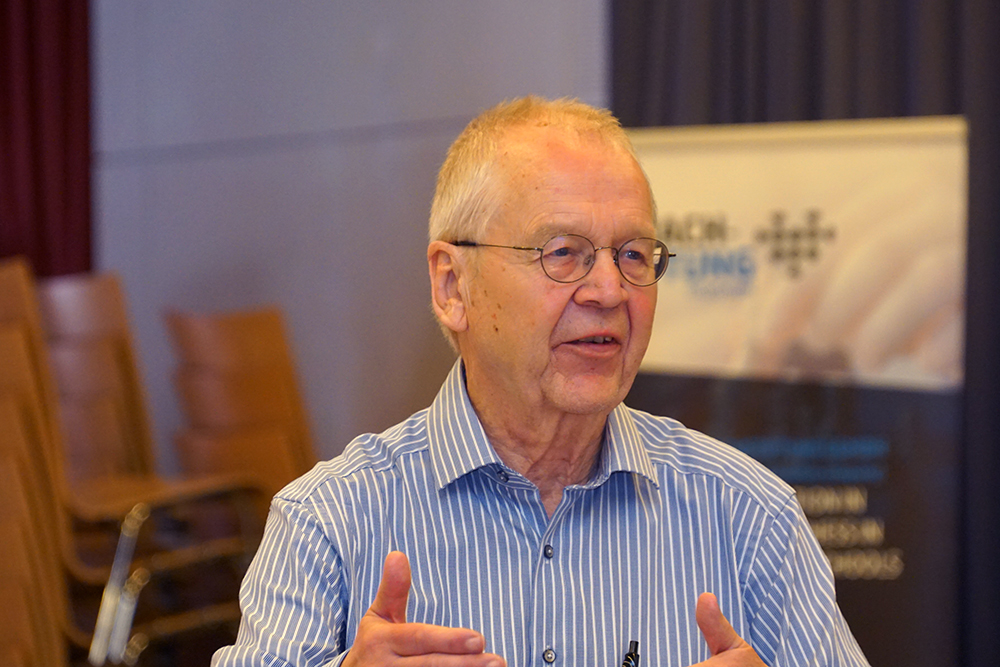
Dr. Helmut Pfleger | Photo: Nadja Wittmann
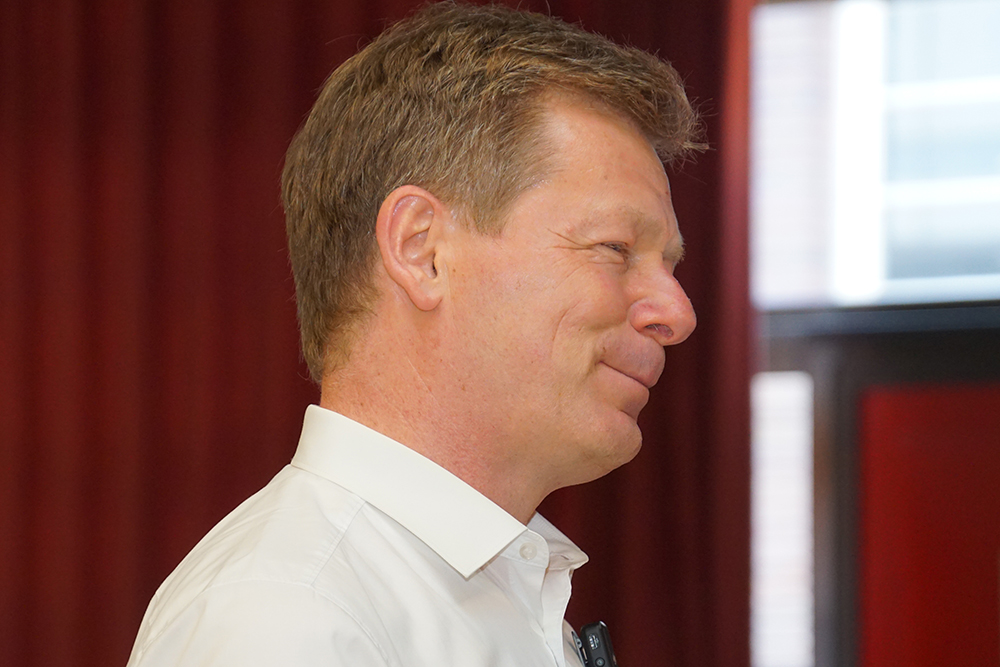
Dr. Richard Lutz always confident: actually he was supposed to play against children and youths, now he has to compete against adult Hamburg club players! | Photo: Nadja Wittmann
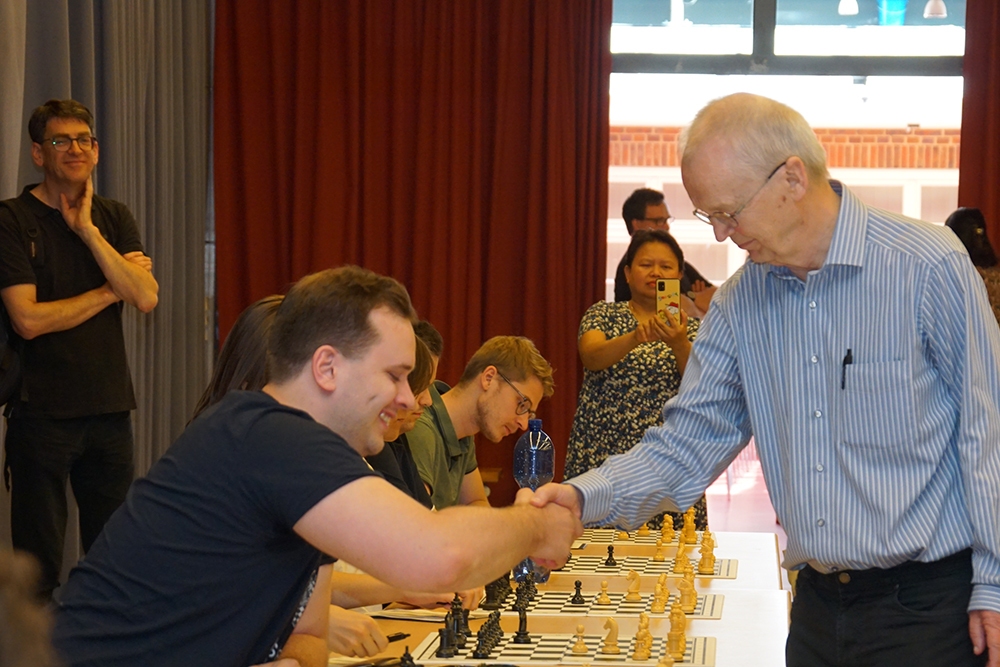
Joy on both sides before the first move | Photo: Nadja Wittmann

Dr Richard Lutz at the board of Daria (7 years old), the youngest participant of the simul | Photo: Nadja Wittmann
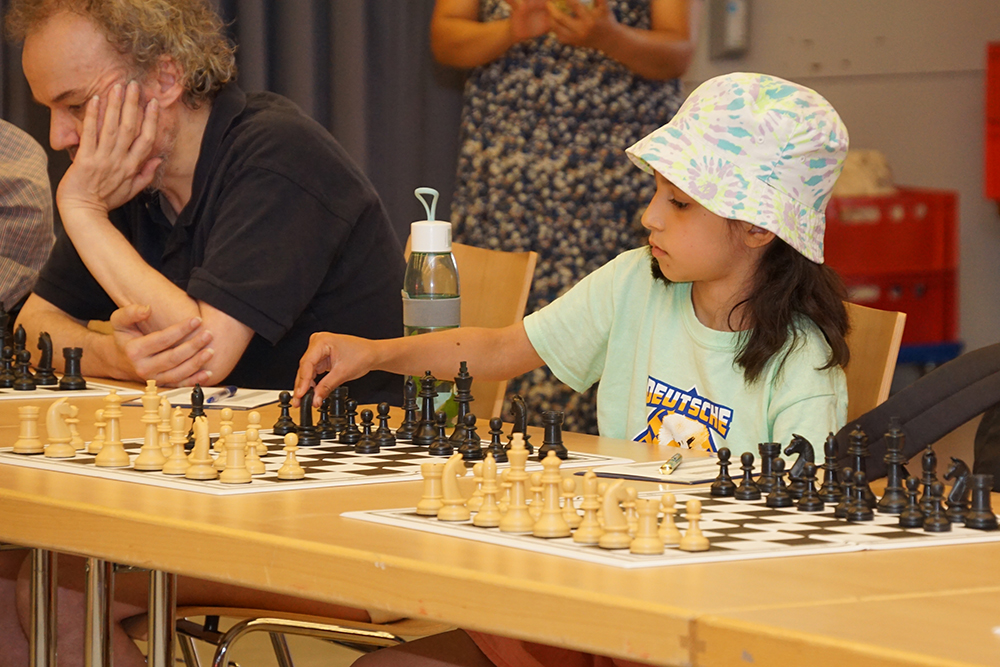
Daria has been playing in the chess club for a year and has already played in the German Girls’ Championship U-8 in Willingen! | Photo: Nadja Wittmann
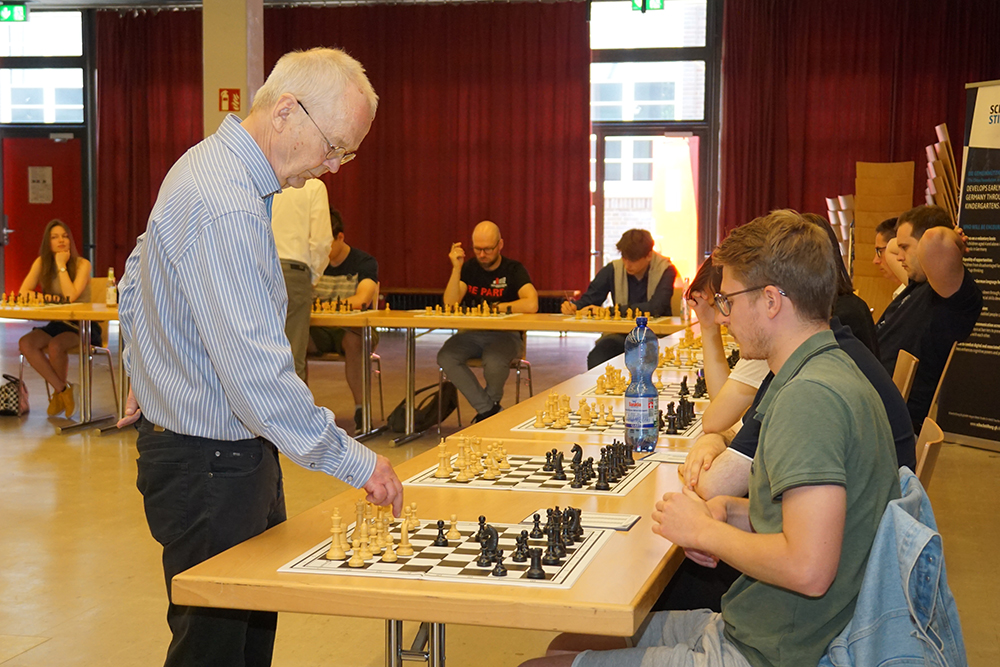
Dr. Helmut Pfleger (79) is in great physical condition: two days before the simul he was splaying football, now he spent over four hours playing chess! | Photo: Nadja Wittmann

Constanze Wulf, Wolfgang W. Springer (Springer Bio-Backwerk, sponsor of the Hamburg Chess Club) and Paolo from the Schachelschweine | Photo: Nadja Wittmann
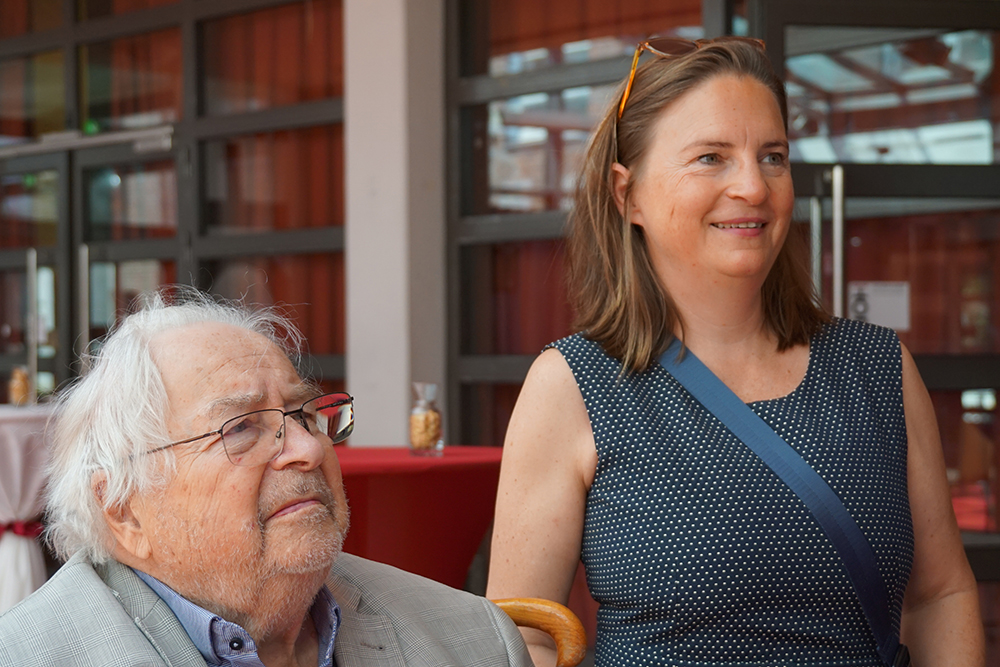
HSK Honorary Chairman Christian Zickelbein and his daughter, Eva Maria Zickelbein | Photo: Nadja Wittmann
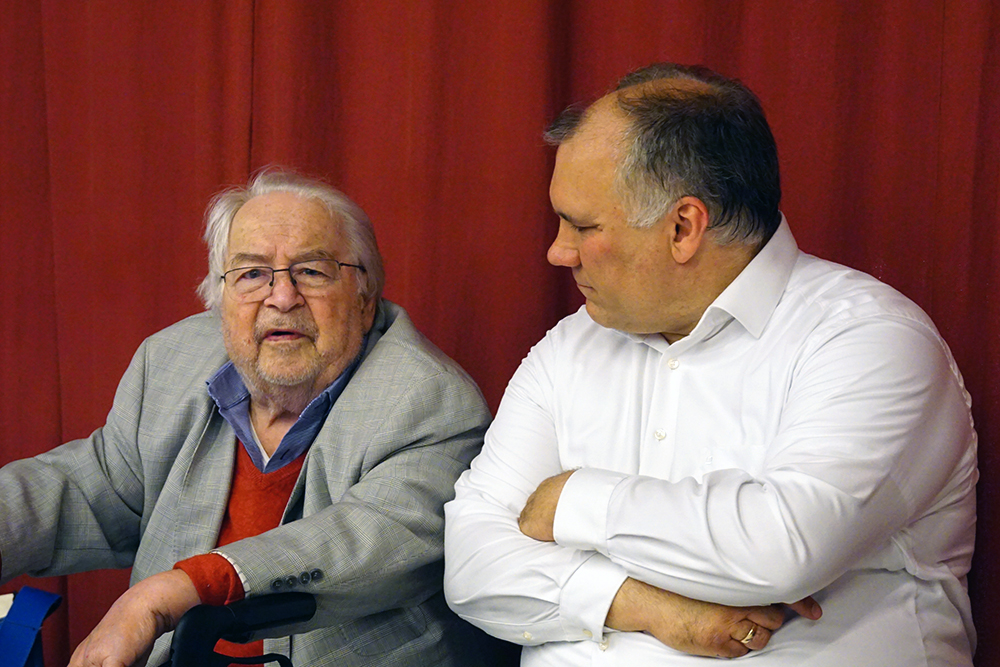
Christian Zickelbein chatting with Björn Lengwenus | Photo: Nadja Wittmann
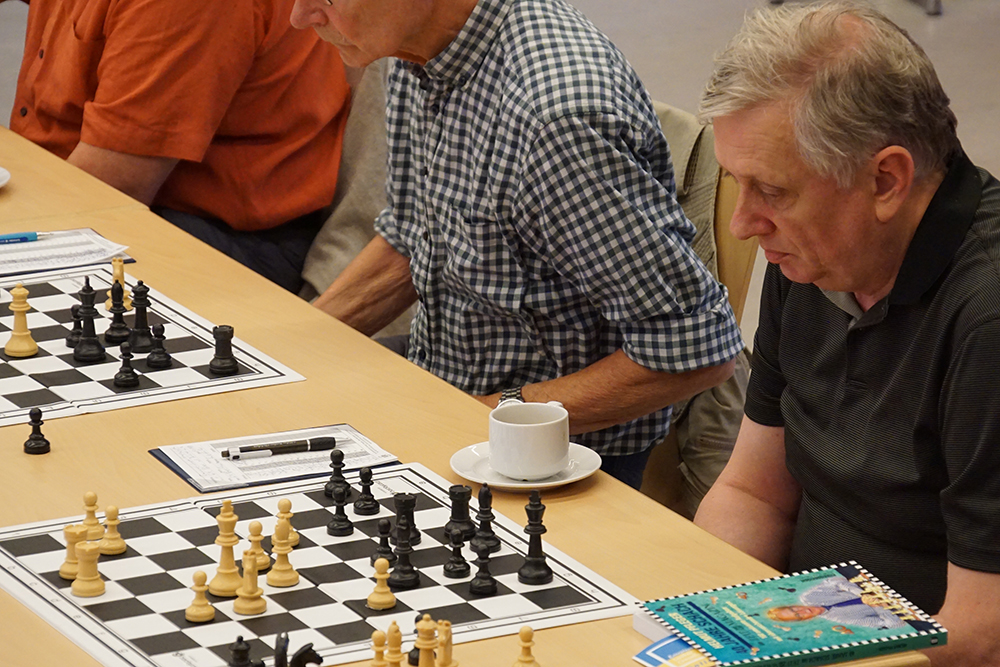
Ralf Kadler (Schachelschweine) at the board: almost 40 years ago he organised the legendary SG HHUB youth tournaments in this very auditorium | Photo: Nadja Wittmann

Dr Helmut Pfleger bravely makes many, many laps around the hall! | Photo: Nadja Wittmann
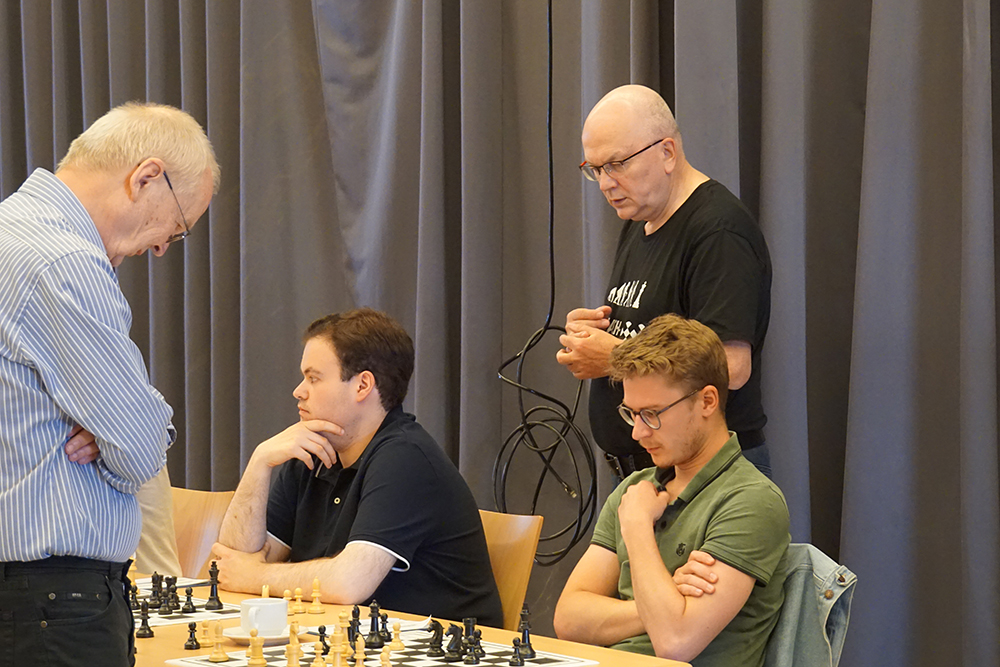
Dr Helmut Pfleger thinks for a moment — kibitzing in the background is Dr Gerhard Köhler from the German Chess Foundation | Photo: Nadja Wittmann
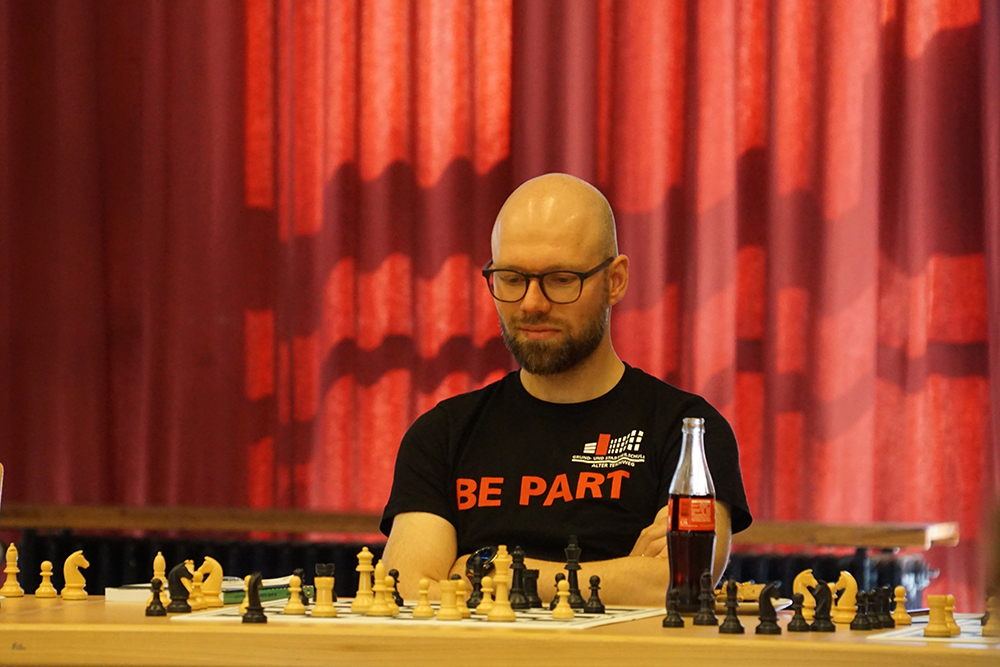
Of course, teachers from the district and the elite schools of sport also play! | Photo: Nadja Wittmann
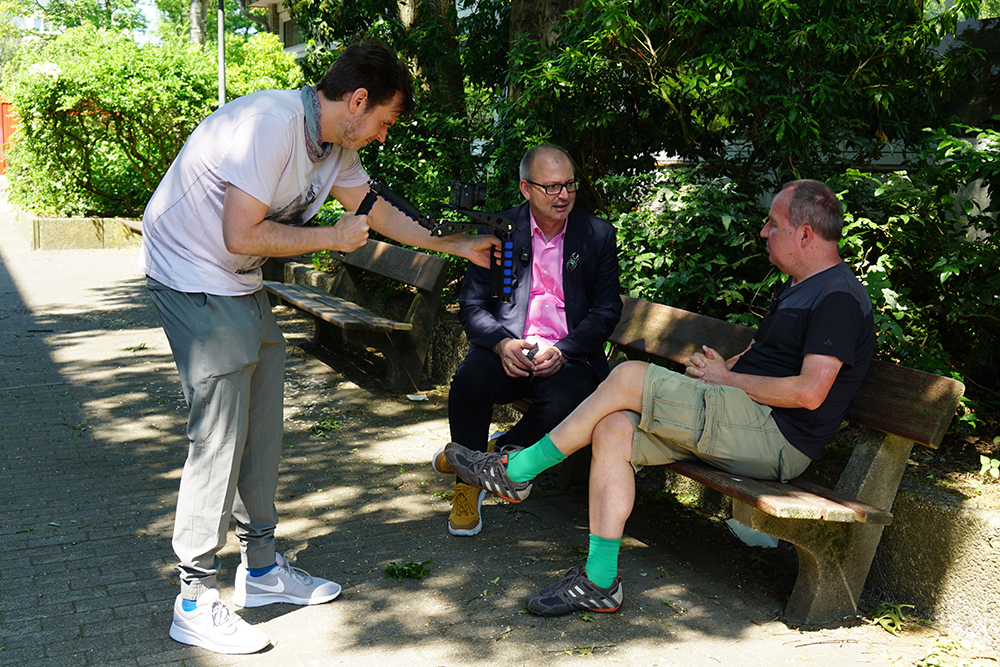
Outside in the schoolyard: Johannes Fischer (ChessBase news editor) and Arne Kähler (ChessBase video editor) interview Prof. Dr. Christian Hesse | Photo: Nadja Wittmann

The students of the ‘Welcome Class’ in the school kitchen. For two days they chopped, kneaded, baked and fried, and afterwards they also served at the bar of the event! | Photo: Nadja Wittmann
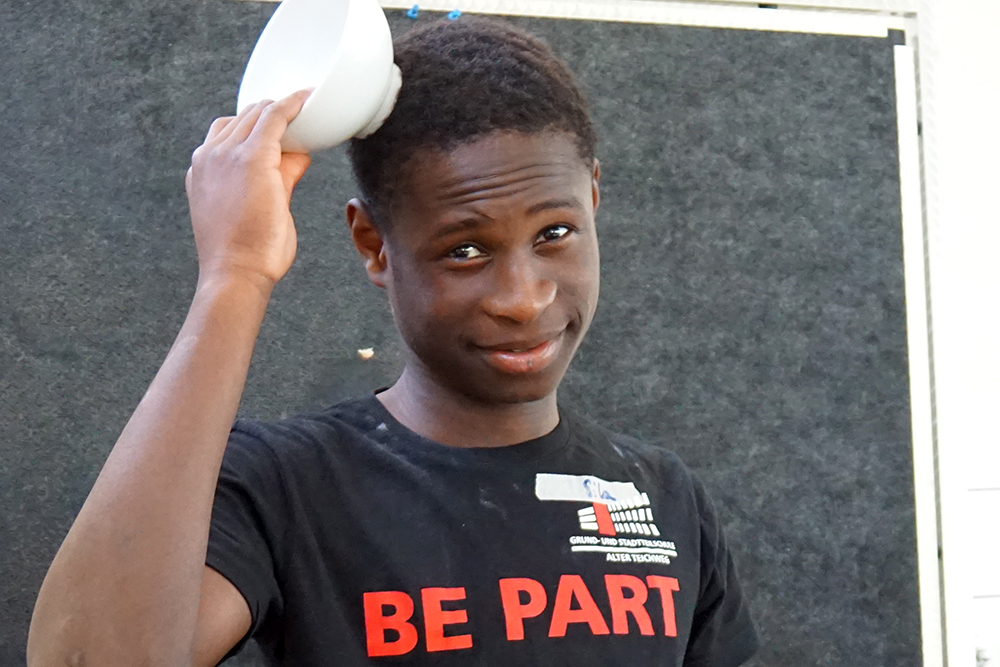
Artista! | Photo: Nadja Wittmann

IVK coordinator Iris Wolf and part of her fantastic team of students! | Photo: Nadja Wittmann
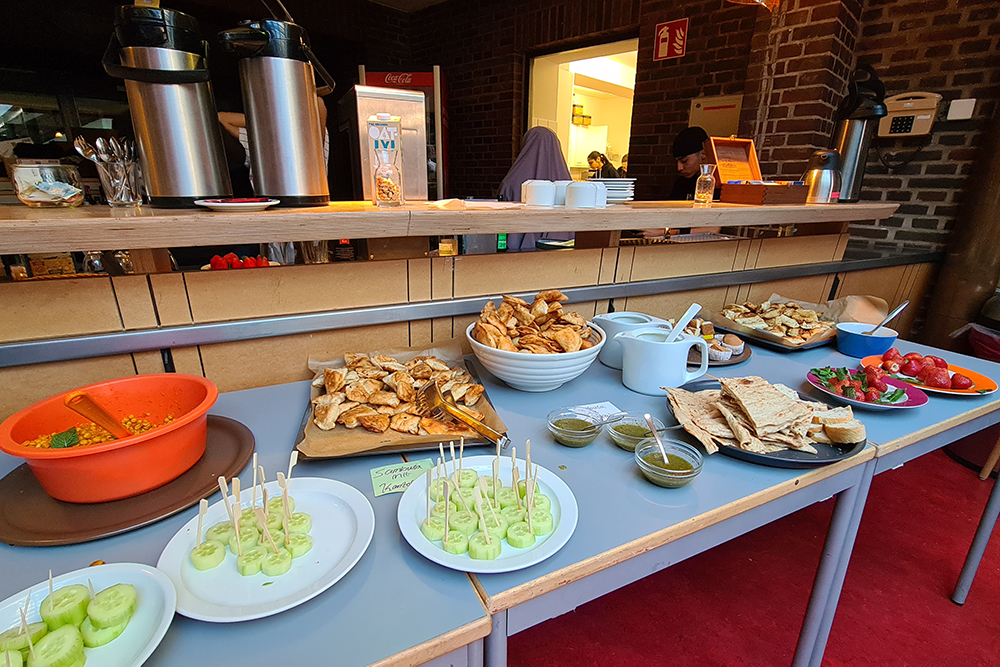
The result: a great buffet with Afghan specialities, which the welcome class conjured up for all the guests of the cultural evening! | Photo: Nadja Wittmann
Check out the gallery above for more photos!
Links
